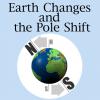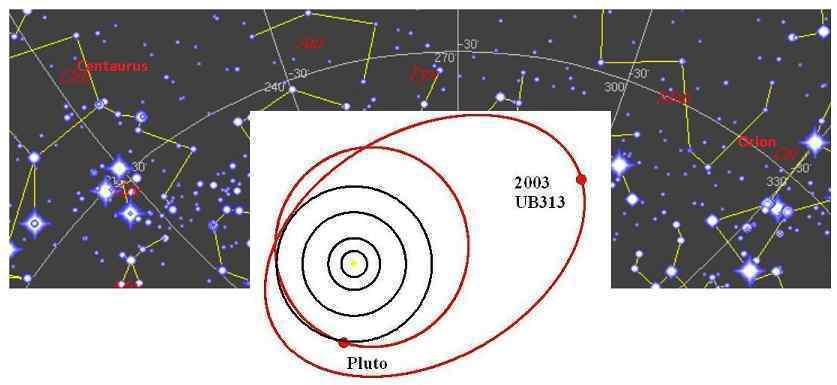| Online: | |
| Visits: | |
| Stories: |
Reviving Planet X
Scientists claimed they found elusive ‘Planet X.’ Doubting astronomers are in an uproar. [and from another] https://www.washingtonpost.com/news/morning-mix/wp/2015/12/11/scientists-claimed-they-found-the-elusive-planet-x-now-astronomers-are-in-an-uproar/ It’s a big, dark presence at the farthest reaches of our solar system, a mysterious force powerful enough to skew the paths of planets in orbit and yet so subtle that it slips undetected past even the most powerful telescopes on Earth. It’s known as Planet X. And a group of astronomers said they’d found not just one such presence, but two of them. [and from another]http://www.weather.com/science/space/news/astronomer-super-earth-solar-system Using data from the Atacama Large Millimeter/submillimeter Array (ALMA) telescope in Chile, astronomers found a faint object in the Alpha Centauri star system that’s closest to Earth, Astronomy.com reported. After analyzing the data, the astronomers ruled out that it may be another star. Instead they posit that the object is orbiting our own sun in the outer realm of our solar system – meaning it could be the much sought-after “Planet X.” [and from another] http://www.dailymail.co.uk/sciencetech/article-3356577/Is-SUPER-EARTH-edge-solar-Scientists-say-mega-planet-orbiting-sun.html Astronomers believe they have discovered two of the most distant objects ever found in our solar system. Using the Alma telescope, researchers from Sweden and Mexico noticed mysterious objects crossing their field of view as part of separate studies. It’s difficult to tell exactly how far away these objects are, but their speed and brightness suggest that they are unlikely to be stars. One of the objects, they say, could be a ‘Super Earth’ located six times farther away than Pluto. The studies have already drawn scepticism from other astronomers who say they are likely to be something known as super-cool brown dwarfs. Brown dwarfs are cosmic bodies that never burn fusion at their core. Scientists sometimes refer to them as ‘failed stars.’ While the latest studies do not rule out this possibility, they add that both objects may be a good candidate for ‘Planet X’. [and from another] http://www.eurekalert.org/pub_releases/2006-04/bri-emf042406.php The recent discovery of Sedna, a small planet like object first detected by Cal Tech astronomer Dr. Michael Brown, provides what could be indirect physical evidence of a solar companion. Matching the recent findings by Dr. Brown, showing that Sedna moves in a highly unusual elliptical orbit, Cruttenden has determined that Sedna moves in resonance with previously published orbital data for a hypothetical companion star.
What are these objects found by the ALMA array in Chile? We have stated that the Sun’s dark unlit twin, its binary, is some 18.74 Sun-Pluto distances away, and that these two binaries are in a static dance with each other, no motion toward or away from each other. One of the objects is described as being 6 times the Earth-Pluto distance away, much closer at hand. The ALMA objects were discovered in the direction of the constellation Centauri. Nibiru comes in from its second foci, the dark unlit binary of the Sun, from the direction of Orion, but these two constellations are in the same general vicinity.
There are two issues here, to be examined. One is the story of a gravity pull out in the general direction of Orion, causing the outer planets to perturb, pull toward this mystery gravity draw. This was much in the news in the early 1980’s when the gravity draw was known as Nemesis. The subject was stricken from the press after 1983 when the approaching Nibiru was discovered via the NASA/JPL infrared balloon and the cover-up began. This subject has reared its head on occasion, in 2006 when a group of scientists argued that long-period comets all come in and exit from this direction, and Sedna pulls in this direction. But this gravity draw has never been explained. Now the subject of Planet X is being revived.
The second issue to be examined is these two recently discovered objects. It is speculated there is only one object, a moving object, but there are two. If they were found 6 Sun-Pluto distances away, Sedna, which orbits the Earth, was found to move 3 Sun-Pluto distances away during its orbit. Are these new objects in orbit around Earth? They are not, but rather in a static dither. We mentioned Nibiru spent most of its life midway between its foci, in a dither, only drifting close enough to Earth to make a pass every 3,600 years or so.
We mentioned that Nibiru began its sling orbit coming out of the Big Bang, and thus must forever remain in this sling orbit, but other objects in the vicinity were not trapped in this manner. Planets orbit their sun’s because they are close enough to be affected by the rotation of matter within their suns, the sweeping arms we have described. If the distance is sufficient, and if the planetary mass has more than one gravity draw calling to it, it will dither. These two new discoveries are proof of a second gravity draw in the direction of the constellation Orion. Meanwhile, the subject of Planet X, aka Nibiru, is again in the news!
Source: ZetaTalk Chat Q&A for December 19, 2015
http://poleshift.ning.com/profiles/blogs/reviving-planet-x
Source: http://poleshift.ning.com/xn/detail/3863141:BlogPost:1010219






